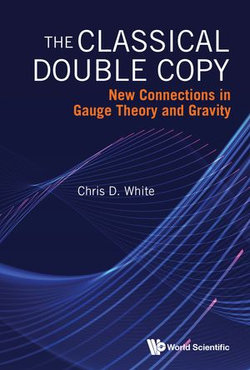Our current understanding of nature is in terms of matter that is acted on by forces. There are four fundamental forces, of which three are described by so-called gauge theories, a type of quantum field theory. The fourth force, gravity, is best described by general relativity, and our traditional ways of thinking about gauge theories and gravity look completely different from each other.
In recent years, an exciting new correspondence called the 'double copy' has emerged, which suggests that the above theories may be much more closely related than previously thought. Inspired by previous work in string theory, it originated in the study of how particles interact, but has since been generalised to show that many gravitational quantities can be simply obtained by recycling simpler gauge theory results. This has significant practical applications — such as new calculational tools for astrophysics — but is also of conceptual importance, in suggesting that our current ways of thinking about fundamental physics are hiding a vast underlying structure.
This book reviews our current theories of fundamental physics, before describing in detail how the double copy was discovered, how it can be applied to different types of object in gauge or gravity theory, and what its current and future applications are. No prior knowledge of quantum field theory or string theory is assumed, such that the book will be of interest to a broad audience of physicists and mathematicians.
Contents:
- Introduction
- The Theories of Fundamental Physics
- The Double Copy for Scattering Amplitudes
- The Classical Double Copy: A First Look
- Exact Classical Double Copies
- Towards a Non-Perturbative Double Copy
- Perturbative Classical Solutions
- Outlook
Readership: Academic researchers in physics or mathematics, particularly those in the following fields: astrophysics, high energy physics, theoretical / mathematical physics, cosmology; advanced undergraduates / Masters students who may be pursuing dissertation or project work in related topics, as well as PhD students and above (e.g. postdocs, general physics faculty).
Key Features:
- The first monograph on a highly active research area, that is growing in international scope
- Provides a concise introduction to all types of theory used in fundamental physics (gauge theories, General Relativity), before showing how they are inter-related using new research ideas
- Addresses both fundamental / conceptual issues in current theoretical research, as well as practical applications
- Written to be accessible to researchers in different subfields of physics (high energy physics, astrophysics, mathematical physics)
- Full bibliography provided, for interested readers to find out more



Share This eBook: